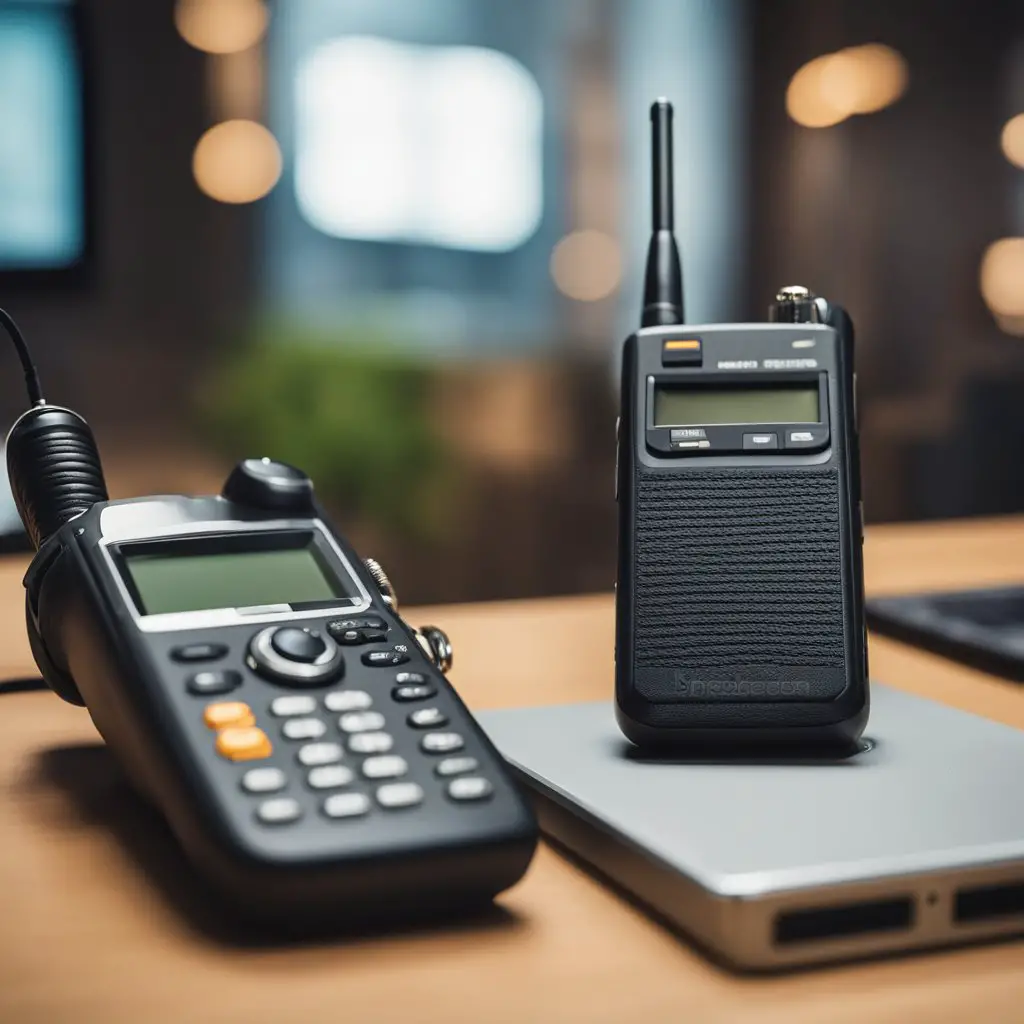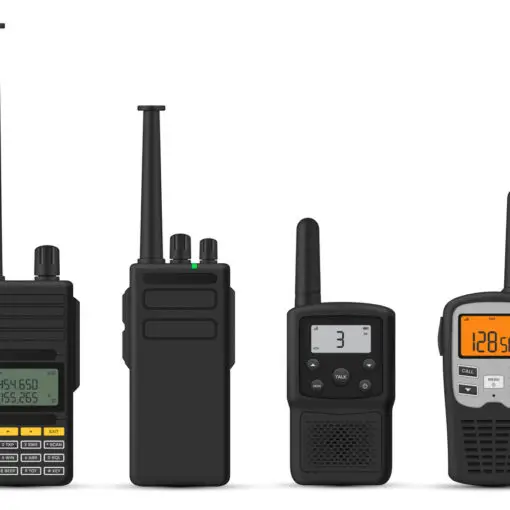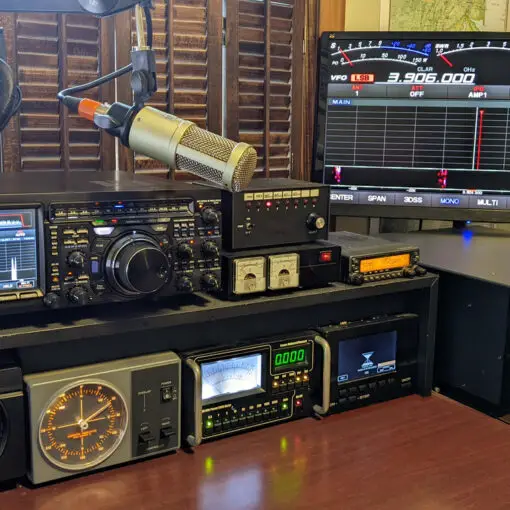Turning your cell phone into a ham radio can be an effective way to communicate with others during emergencies and in situations where cell phone networks may not be available. In recent years, technology has advanced, allowing savvy individuals to transform their smartphones into fully functional two-way radios, providing better connectivity and access to essential information. This involves utilizing special applications and equipment, such as the Alianza DxB, a portable rugged two-way radio docking case for your smartphone.
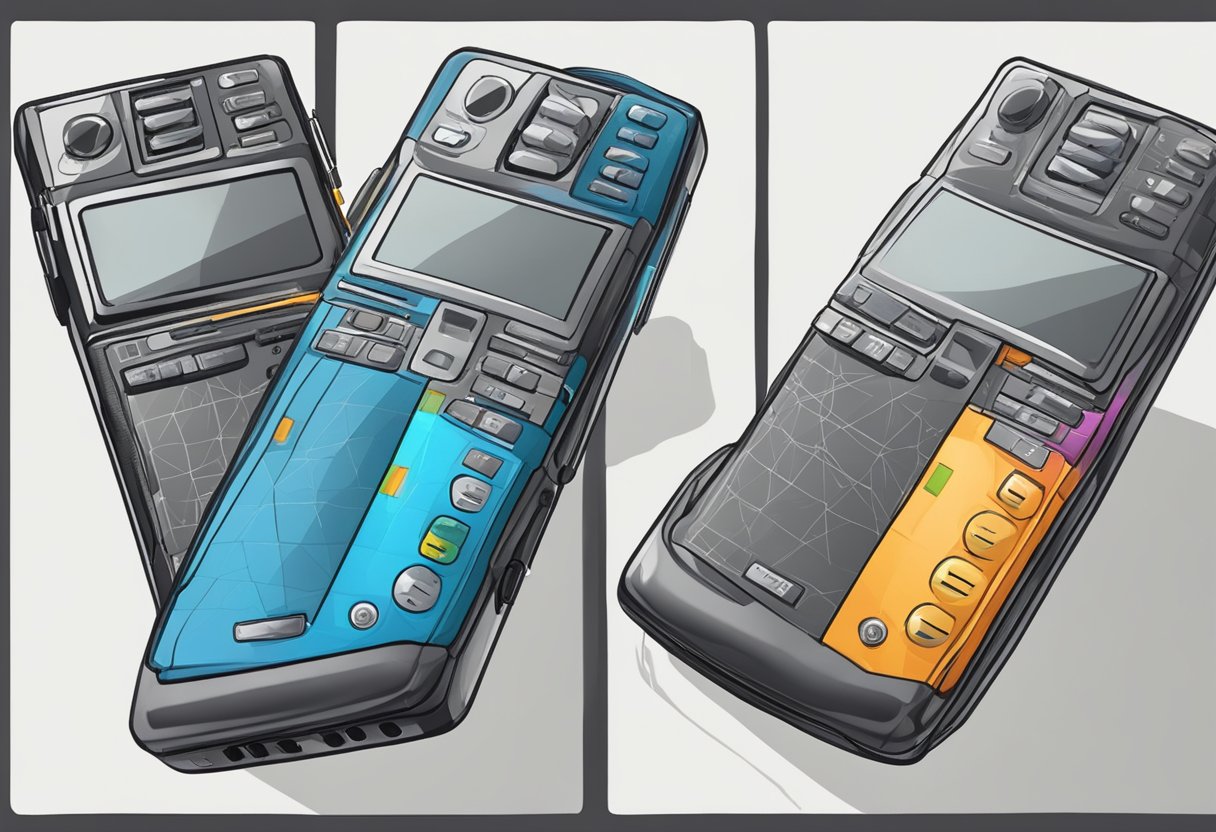

With the increasing popularity of smartphones, developers have created various apps and programs that enable users to get the most out of their devices. Converting your phone into a ham radio requires specific applications, such as HamSphere, which offers a modularized amateur radio transceiver where operators can build their own radio using plug-ins and virtual antennas. By understanding the prerequisites, downloading necessary applications, and setting up connections, individuals can turn their smartphones into versatile ham radios. This conversion process can provide them with essential communication capabilities during emergencies, help them explore rugged and portable options, and gain a deeper understanding of messaging, security, and range considerations.
Key Takeaways
- Converting a cell phone to a ham radio involves using applications and tools to access essential communication capabilities.
- The process requires understanding prerequisites, setting up connections, and managing frequencies, bandwidth, and range.
- Transforming a smartphone into a ham radio can offer emergency communication options, exploring rugged and portable solutions, and better understanding messaging and security aspects.
Understanding Ham Radio
https://www.youtube.com/watch?v=EwfQ-Zd5-0c&embed=true
Ham radio, also known as amateur radio, is a popular hobby and service that involves the use of radio frequency (RF) spectrum for communication purposes. Ham radio operators, or “hams,” use a variety of communication methods, including voice, Morse code, and digital modes, to communicate with other enthusiasts around the world.
The RF spectrum used in ham radio communication spans across a variety of frequency bands, from low frequency (LF) to ultra-high frequency (UHF) and beyond. Some of the common bands used by hams include the 2m (144-148 MHz) and 70cm (420-450 MHz) bands, both in the VHF and UHF ranges, respectively. The choice of frequency band depends on factors such as signal propagation characteristics, availability of equipment, and licensing requirements.
Ham radio communication often relies on two-way radio systems, allowing for direct communication between operators. This can be accomplished using handheld devices, mobile installations in vehicles, and fixed-base stations at homes or other locations. The choice of equipment and power levels used in ham radio communication is governed by regulations and licensing requirements in each country.
To get started in ham radio, potential operators must study for and pass a licensing exam, demonstrating their understanding of radio theory, operation principles, and regulations. Once licensed, operators are assigned a unique callsign, which identifies them on the air and is used to log communication contacts.
Ham radio serves many purposes, from providing emergency communication services during disasters to enabling casual conversations between operators around the globe. Some hams even use their skills and equipment as a platform for experimenting with new technologies and contributing to the advancement of radio communication.
In summary, ham radio is a versatile hobby that enables enthusiasts to communicate, learn, and explore the world of radio frequency communication while fostering a sense of global community and contributing to the development of new technologies.
Prerequisites to Convert a Cellphone


Before attempting to convert a cellphone into a ham radio, there are specific requirements and tools you must consider. This process is possible with both Android and iOS smartphones, but the methods and tools needed may vary depending on the operating system.
To start, it’s essential to have a compatible smartphone. Most modern smartphones, such as Android devices or iPhones, should work well for this process. Ensure that the device is in good working condition and has the necessary connectivity options, such as Bluetooth or reliable WiFi.
Next, you’ll need a proper gadget or adapter to transform your smartphone into a radio. An example is the GoTenna, a low-power radio transceiver that connects to your smartphone via Bluetooth. Another option is the Alianza DxB, a rugged two-way radio docking case with an additional battery that turns your smartphone into a multi-band two-way radio.
Make sure to research the device’s compatibility with your smartphone model and operating system, as not all devices may support every type of phone. In addition, it is crucial to be familiar with ham radio regulations and licensing in your area. Some countries may have specific rules and guidelines that all amateur radio operators must follow.
Lastly, you’ll need relevant applications or software to facilitate communication via ham radio. Numerous apps allow you to turn your phone into a radio, such as Zello, which works on both Android and iOS devices. You can also explore other communication and messaging apps, including those specifically designed for emergency situations.
With the right tools and knowledge, you can confidently and effectively convert your cellphone into a ham radio, providing an alternative means of communication and potentially assisting in emergency situations.
Downloading Necessary Applications
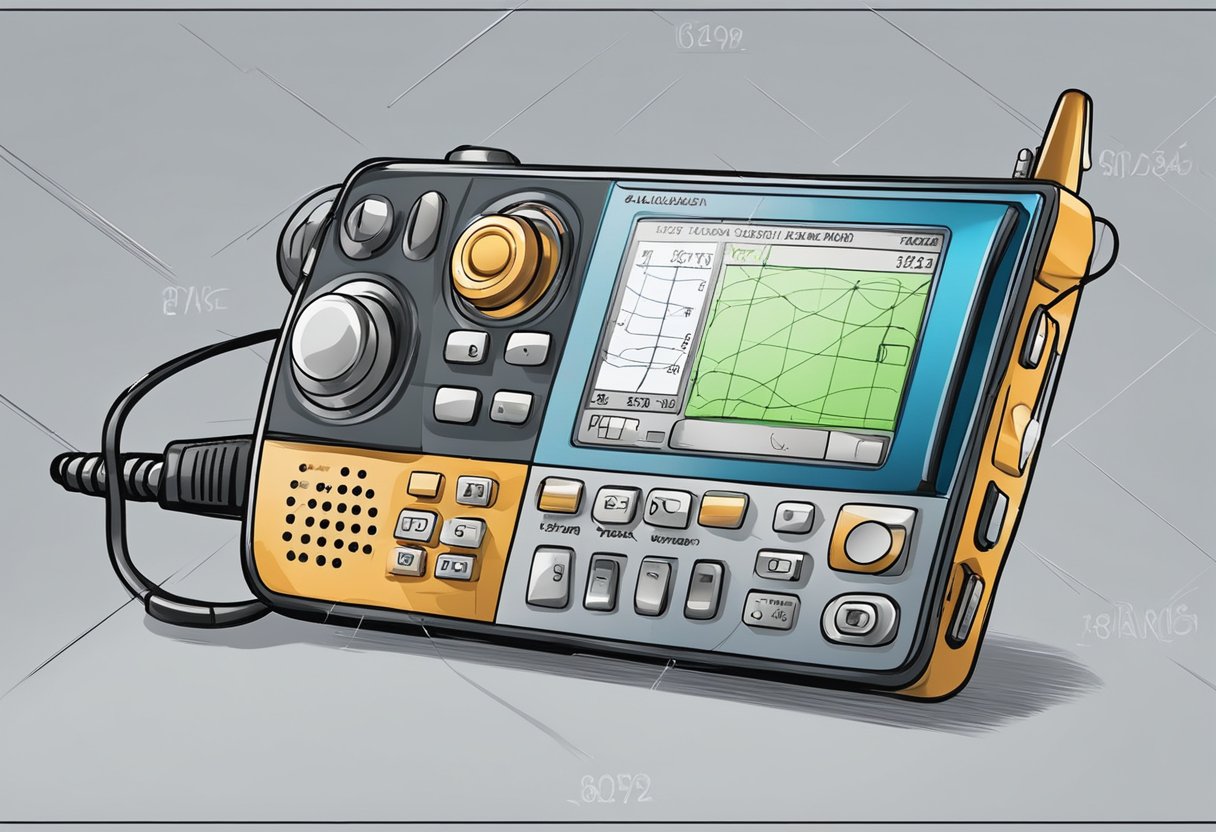

Turning your cellphone into a ham radio can be accomplished by downloading the necessary applications. These apps are available on various platforms like Google Play Store, Amazon Appstore, and Apple App Store. The process is simple and easy to follow.
The first app you need to consider is HamSphere, which provides an amateur radio software transceiver that works on Windows, Mac, Linux, iOS, and Android devices. This app allows you to talk to ham radio users worldwide without requiring any extra hardware. Installation takes less than a minute, and they offer a 30-day trial to get started.
Another useful application is RepeaterBook, which functions on both Android and iPhone devices. This app uses the GPS technology built into your phone to quickly gather and reference local repeaters on any mode or band. As you travel around the world, RepeaterBook helps you keep track of nearby repeaters, making communication seamless and efficient.
For Morse code enthusiasts, consider downloading the Morse Decoder app for Android devices. This app decodes Morse code characters through the built-in microphone of your phone, allowing you to communicate with other ham radio operators proficient in Morse code.
By installing these applications on your smartphone, you can turn it into a functional ham radio without investing in expensive hardware. Remember to follow local regulations and guidelines while using these apps to communicate on ham radio frequencies. With the right tools and knowledge, your smartphone can become a powerful communication device in the world of amateur radio.
Setting Up Bluetooth and Wi-Fi Connections
Setting up a Bluetooth and Wi-Fi connection for your cellphone to turn it into a ham radio is important for seamless communication. First, ensure that your phone or tablet has Bluetooth capability and can support data transfer over Wi-Fi. Most modern smartphones come with these features as standard.
To begin, pair your device with a Bluetooth-enabled ham radio transceiver such as the Mobilinkd TNC3. This TNC uses the KISS protocol to send and receive packet data between your phone and your ham radio. Make sure that your transceiver and smartphone are within wireless range to establish a strong Bluetooth connection.
Next, download a reliable ham radio app, like EchoLink, from your device’s app store. EchoLink allows you to connect your phone to the extensive network of ham radio operators worldwide with its easy-to-use interface. Follow the onscreen instructions to set up the app with your call sign and complete the verification process, as described here.
Once your smartphone and transceiver are connected via Bluetooth, you also need to establish a Wi-Fi connection. This will enable you to use internet-based services, such as listening to real-time broadcasts and communicating with other ham radio operators. Ensure that your phone is connected to a stable Wi-Fi network for optimal performance.
With your Bluetooth and Wi-Fi connections established, you are now ready to use your smartphone as a ham radio. This setup allows you to enjoy the benefits of both types of connections – Bluetooth for local connections with the transceiver and Wi-Fi for accessing internet-based ham radio resources.
By following these simple steps and ensuring proper connectivity, your cellphone can effectively function as a ham radio, offering you a portable and convenient way to engage with the ham radio community.
Conversion of Frequencies and Bandwidth
Converting a cellphone into a ham radio involves adjusting the device’s frequency and bandwidth to align with amateur radio bands. The process requires a clear understanding of the frequency ranges and bandwidth specifications for different ham radio bands.
The frequency of a ham radio is the specific point within a range of available frequencies where the radio operates, while the bandwidth is the width of frequencies within that range that the radio uses for transmission. Amateur radio operators must adhere to regulations and operate within designated frequency bands such as 2 meters (144-148 MHz) or 33 centimeters (902-928 MHz) 1.
To facilitate conversion, some smartphones have built-in transceivers that cover specific frequency bands, such as UHF (Ultra High Frequency). Knowing the device’s base frequency and the desired ham radio frequency band will enable smooth conversion.
In the process of conversion, various factors come into play. For instance, the device’s hardware, the transceiver’s compatibility with the desired frequency, and the local regulations in the area of operation. It is essential to have a reliable understanding of the technical specifications and limitations before attempting a conversion.
Ham radio enthusiasts can leverage readily available resources and conversion guides for specific devices. For example, a tutorial on converting a Motorola XPR into ham radio frequencies 2 might provide valuable insights for users with Motorola devices. Additionally, some devices, like Android smartphones with built-in UHF transceivers 3, can be used for ham radio operations right out of the box.
In conclusion, the conversion of frequencies and bandwidth is a crucial aspect of turning a cellphone into a ham radio. Careful consideration of the technical specifications, desired frequency bands, and local regulations is necessary to ensure a successful and legally compliant outcome.
Engaging in Radio Communication
Turning your smartphone into a ham radio allows you to engage in radio communication using your device. By utilizing existing network infrastructure, this setup enables your smartphone to transmit and receive signals, providing an alternative communication channel when traditional systems are unavailable or unreliable.
One of the most significant benefits of using a smartphone as a ham radio is the ability to connect with a wide range of frequencies. This includes VHF, UHF, and 800MHz bands, ensuring seamless interoperability and communication across different devices and networks. With the help of Radio-Over-IP repeater or gateway features, users can even extend the range of their communication beyond the typical 25 miles, reaching a global audience via their smartphone’s data connection.
Ham radio communication with a smartphone typically requires specific hardware and software. For instance, an external radio interface device is necessary to connect your smartphone to a transceiver, allowing it to transmit and receive radio signals. Additionally, dedicated apps can provide a more accessible and user-friendly radio communication experience, removing the need to understand complex radio frequency settings.
In regions with limited connectivity or during times of emergency, utilizing a smartphone as a ham radio can be particularly beneficial by helping establish a localized network. This network allows for communication and signal transmission among users in the area, ensuring consistent contact in cases of natural disasters, public safety situations, or any other event where traditional channels are unavailable.
In conclusion, transforming your smartphone into a ham radio offers various advantages, such as connecting to multiple frequency bands, extending communication ranges, and enabling localized networks during emergencies. By incorporating the necessary hardware and software components, users can enjoy efficient and reliable communication through their smartphones, enhancing their overall preparedness and connectivity when it matters most.
About Range and Elevation
When discussing the range and elevation of ham radios, it is essential to consider how these factors affect the overall performance and coverage. Ham radio range refers to the distance that a signal can travel and communicate effectively. Numerous variables can influence the range, including frequency, output power, and the type of antenna being used1.
Elevation is another aspect that plays a vital role in ham radio performance. As the elevation increases, so does the potential range of communication. The signal can travel upwards of 50 miles depending on the elevation and environment2. A higher elevation generally provides better line-of-sight, which helps in transmitting signals over large distances.
The environment also plays a crucial role in determining the performance of ham radio communication. Urban settings filled with concrete buildings and other structures might cause signal degradation due to obstructions and reflections. In contrast, rural environments offer a more open landscape, which allows signals to propagate with minimal interference from physical objects.
To obtain the best performance and range from your ham radio setup, it is essential to select the appropriate frequency bands depending on the environment and requirements. For instance, higher frequency bands such as VHF or UHF are more suitable for urban settings due to their ability to penetrate through objects more effectively. On the other hand, lower frequency bands, like HF, are ideal for long-range communication in open rural areas where there are fewer obstructions.
In conclusion, understanding the interplay between range, elevation, and environment is crucial for effective ham radio communication. Choosing the right frequency bands and appropriate antenna types based on these factors will help ensure optimal performance from your ham radio setup.
Emergency Use and Waterproofing
When considering a cellphone for ham radio purposes, emergency use and waterproofing are important factors to take into account. The ability to communicate during emergency situations can be a lifesaving tool, and having a device that remains functional in wet or harsh conditions is crucial.
Most smartphones, however, are not initially designed for emergency use as ham radios. To effectively utilize a smartphone as a ham radio, it is necessary to install applications or use additional hardware that enables radio communication. Some popular applications include Echolink, which allows access to repeaters globally, and APRSdroid, for tracking and messaging through the APRS network. As these apps rely on the internet, having a reliable data connection during an emergency is essential for effective communication.
Furthermore, modern smartphones are increasingly water-resistant or waterproof, with many carrying an IP68 rating. This standard ensures that a device is protected against dust and can withstand immersion in up to 1.5 meters of water for 30 minutes. However, these ratings may not be sufficient for use in extreme weather conditions or submersion for extended periods.
To enhance both emergency use and waterproofing, investing in a rugged smartphone is a practical option. These devices are specifically designed to function in harsh environments and often come with built-in radio features, such as walkie-talkie functionality. Rugged smartphones typically have a higher IP rating, ensuring they can withstand more severe water exposure.
Additionally, waterproof cases and accessories are available for most smartphone models. These can be essential in protecting your device and maintaining its functionality in emergency situations, even if it wasn’t initially designed with ham radio communication in mind.
In conclusion, although smartphones are not an out-of-the-box solution for ham radio communication during emergencies, with the right applications, hardware, and protective measures in place, they can serve as a valuable tool in ensuring communication remains possible in critical situations and adverse conditions.
Understanding Messaging and Security
When using a cellphone as a ham radio, messaging and security are essential aspects to consider. Ham radio operators often exchange messages in the form of text messages for communication purposes. It is important to ensure that the text messages transmitted over the radio waves are secure and private.
One way to maintain privacy in ham radio messaging is through encryption. Encryption involves scrambling the message using a key, which makes it unreadable by unauthorized recipients. Only those who possess the correct key can decrypt the message and read its contents. This process helps protect sensitive information and ensures that the conversation remains confidential.
Besides encryption, there are other methods for enhancing the security of ham radio communication. For example, by using an encrypted network, operators can make it more difficult for unauthorized individuals to intercept and decode messages. In addition, using secure software and applications specifically designed for ham radio can also help prevent data leaks and unauthorized access.
It is also essential to familiarize oneself with the proper etiquette and best practices when using ham radio. Some simple guidelines include avoiding the use of profanity, respecting other operators’ conversations, and not transmitting confidential information on public channels. By adhering to these guidelines, ham radio operators can maintain a secure and respectful environment for all participants.
In conclusion, understanding messaging and security in the context of turning a cellphone into a ham radio is crucial for ensuring a safe and enjoyable experience. By using encryption and secure networks, operators can protect their privacy and maintain the confidentiality of their messages. Additionally, by following proper etiquette and best practices, participants can contribute to a respectful and pleasant environment within the ham radio community.
Battery Considerations
When considering setting up your cellphone as a ham radio, one crucial component is the battery. An efficient and reliable power source is essential for optimal performance of your ham radio system. A popular choice for portable power is the lithium-ion battery due to its lightweight nature, high energy density, and longer battery life compared to other types.
There are a few factors to keep in mind when selecting a battery for your ham radio system:
- Capacity: Choose a battery with sufficient capacity to meet the power requirements of your cellphone and radio equipment. Battery capacity is typically measured in amp-hours (Ah) or milliamp-hours (mAh). A higher capacity will allow for longer operating times between recharges.
- Voltage: Ensure that the battery voltage matches the requirements of your ham radio system. Most ham radio equipment, including cellphones, operate on a 12-volt supply. Some batteries offer adjustable output voltage, which can provide added flexibility.
- Size and weight: For portable operations, compact and lightweight batteries are desirable. Lithium-ion batteries are known for their small size and lightweight properties while still providing sufficient power to the radio equipment.
- Charge and discharge rates: Evaluate the battery’s maximum charge and discharge rates to avoid issues with overheating or shortened battery life. A battery with higher rates can support more demanding power needs for your ham radio setup.
When using a lithium-ion battery for your ham radio system, it is important to follow safety guidelines to prevent issues such as overheating, short-circuiting, or potential fires. Proper handling, storage, and usage of the battery, as well as using a compatible charger, can help ensure its safety and longevity.
In summary, selecting the right battery for your cellphone-turned-ham-radio setup should take into account capacity, voltage, size, and charge-discharge rates. By choosing a battery that best suits your needs, you can ensure optimal performance and reliability for your portable ham radio communication system.
Exploring Rugged and Portable Options
When venturing into the world of ham radios, it’s essential to find a device that combines reliability with practicality. Rugged and portable options provide users with confidence in various conditions, as well as the flexibility to communicate effectively on the go. In this section, we’ll discuss some noteworthy rugged and portable ham radio options.
One popular option is the Yaesu FT-65, known for its durability and user-friendly design. This radio operates on 2 meters and 70 centimeters, allowing for a respectable range of communication. Additionally, its hardened casing ensures that it can withstand rigorous use in outdoor and emergency situations.
Another contender in the rugged category is the BaoFeng BF-F8HP, a powerful 8-watt handheld radio providing users with excellent signal strength and clarity. Its strong build quality and versatile features make it ideal for those looking for a reliable and practical option.
Portability is also a crucial factor for many ham radio enthusiasts, as the need for communication may arise in remote or mobile situations. The BaoFeng UV-82HP is a dual-band ham radio that balances both portability and durability. Its compact size, reliable battery life, and advanced settings make it an excellent choice for users aiming to stay connected in various environments.
Lastly, the Kenwood TH-D74A offers a triband design, allowing users access to a wider range of frequencies. With its rugged construction and versatile feature set, this radio is perfect for those seeking both portability and extensive capabilities in their ham radio devices.
In summary, numerous rugged and portable ham radio options are available, catering to various needs and preferences. By carefully considering the desired features, strengths, and application, ham radio enthusiasts can find the perfect device to stay connected in any situation.
Possible Limitations and Drawbacks
One of the main limitations of turning a cell phone into a ham radio is related to the radio frequency operations. Ham radio operations can be affected by weather and terrain conditions, as they operate using radio frequency waves. This means that, depending on the environment, the reception quality might not be as clear and stable as that of a dedicated ham radio.
Another drawback is the difference in technology. While modern cell phones have transitioned to digital communication, most ham radios are still analog. This means that communicating directly with a cell phone might not be possible with a straightforward conversion, as indicated in this hamradioplanet.com article.
Moreover, skilled operators are usually required to effectively use ham radio equipment. To operate a ham radio, one needs to have a basic understanding of radio frequency concepts, as well as knowledge about the rules and regulations around amateur radio communication. This knowledge might not be readily available to the average cell phone user.
Another potential limitation is the interference that might be caused by using a ham radio in proximity to a cell phone. Ham radios have been known to interfere with cell phone reception, which may lead to disruptions in cell phone communication. This issue might be especially problematic in densely populated areas where the radio spectrum is already crowded.
Lastly, there might be legal constraints around turning a cell phone into a ham radio. There may be regulations that require a license for operating a ham radio or restrictions on certain frequencies designated for specific uses. Additionally, modifying a cell phone’s hardware and software to enable ham radio communication could potentially void the device’s warranty and lead to legal issues.
Frequently Asked Questions
How can I access ham radio frequencies on my smartphone?
Although smartphones are not designed to function as ham radios, you can access ham radio frequencies through dedicated apps. These apps, such as Internet Radio, allow you to listen to ham radio transmissions from around the world. Note that these apps will not enable your smartphone to transmit on ham radio frequencies.
What apps are available for ham radio on mobile devices?
There are several apps available for both Android and iOS devices to aid in ham radio activities. Some popular apps include APRSdroid for Android, which is helpful for Automatic Packet Reporting System (APRS), and EchoLink for iOS and Android, which allows amateur radio operators to communicate with each other using Voice over IP (VoIP).
Is it possible to convert a cell phone into a ham radio transmitter?
Technically, it’s not possible to convert a cell phone into a ham radio transmitter because cell phones operate on different frequency bands and have proprietary hardware. However, there are apps that can provide limited ham radio communication capabilities, like participating in existing ham radio networks or using your phone’s existing Wi-Fi and cellular connections to communicate via ham radio servers.
What are some beginner-friendly resources for learning ham radio?
For beginners interested in ham radio, there are many resources available to help you get started. The ARRL (American Radio Relay League) is the national association for amateur radio in the United States and offers articles, tutorials, and licensing-related information. You can also take advantage of online forums like QRZ or eHam where other ham radio operators share their expertise and knowledge.
Can I use my iPhone to listen to ham radio channels?
Yes, you can use your iPhone to listen to ham radio channels, thanks to apps like EchoLink and HamSphere. These apps provide access to various ham radio frequencies, allowing you to connect with ham radio operators and listen to their transmissions. Please note that using these apps will not allow you to transmit on ham radio frequencies with your iPhone.
What opportunities are there for connecting to ham radio servers online?
There are several opportunities to connect to ham radio servers online, such as EchoLink and IRLP (Internet Radio Linking Project). These platforms use the internet to link ham radio repeaters or stations, allowing operators to communicate over long distances without the need for expensive radio equipment. All you need is an appropriate app, a compatible device, and an internet connection to join the network as a listener or licensed transmitter.

